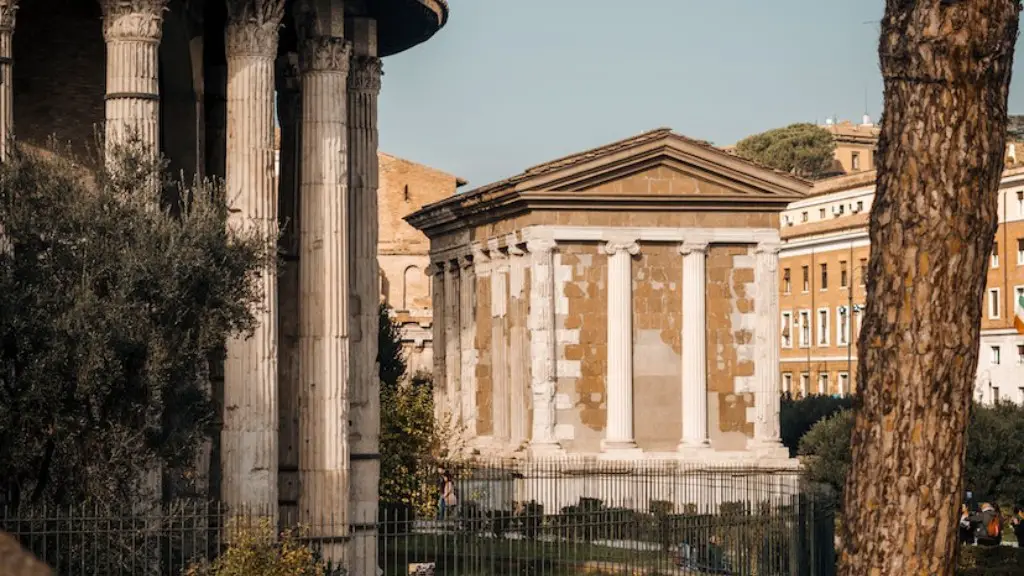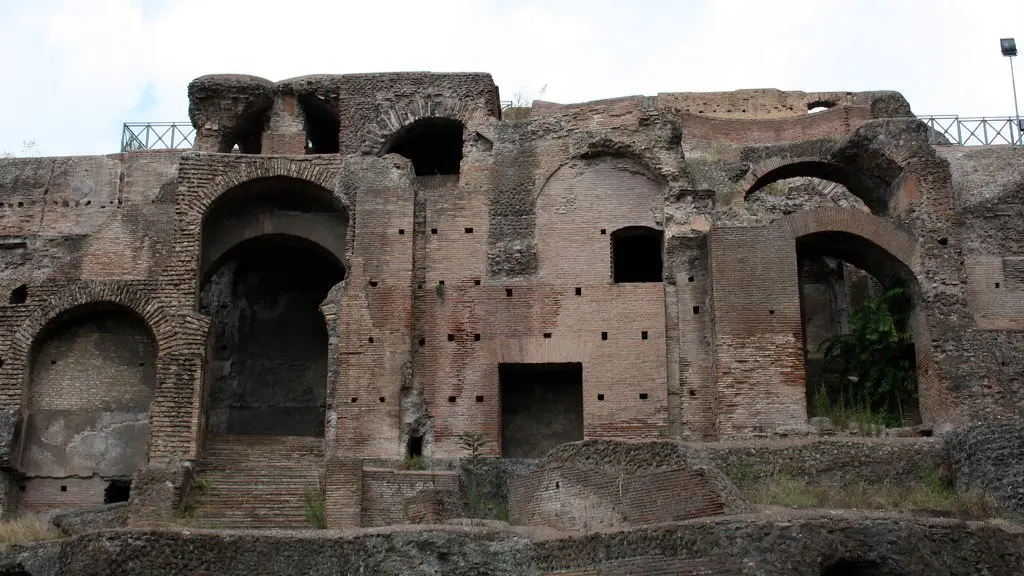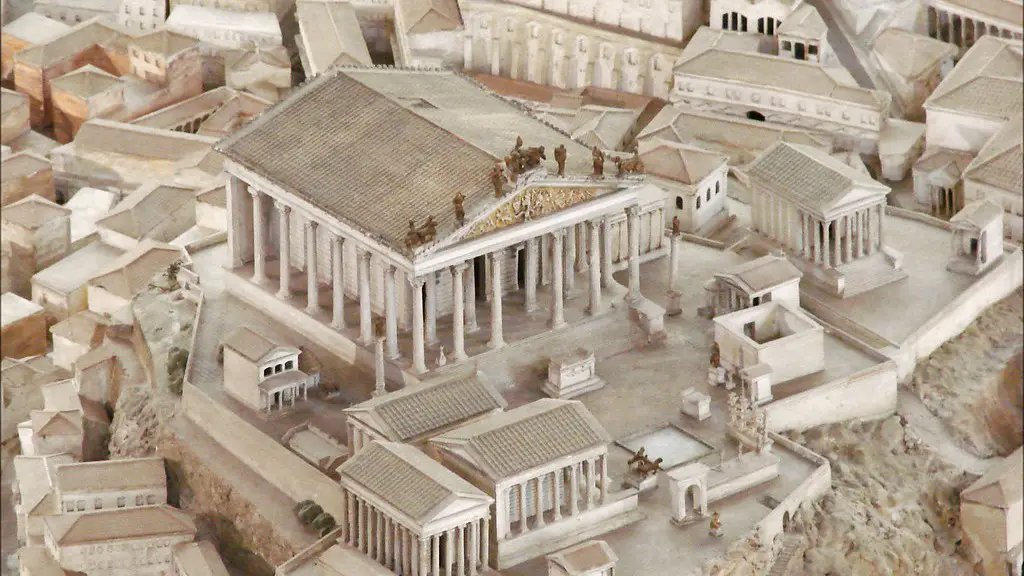Culture and Memory
To understand why Ancient Rome was the land of grandeur and grandiosity, one must explore the memories the Roman people carried with them. Ancient Rome was a place of great cultural feats, where words of wisdom and power were passed down from generation to generation. This fundamental element of Roman culture has come to define their eternal legacy of greatness. The emperors and citizens of Rome built an unparalleled sense of identity, transcending time and boundaries.
This communal memory of greatness is what made Ancient Rome such a powerful cultural force. While their culture was based on the development of their military and political institutions, it was reinforced with a deep appreciation of their rooted and talked about subjects such as literature and philosophy. The works of Quintilian, Cicero, and Pliny, have become woven into the narrative of the Roman Empire and they have been memorialized in art and literature throughout the centuries.
From public parks, the grandeur of temples, and the beauty of their art and architecture, Ancient Rome showed an immense standard of cultural sophistication. Such monuments of beauty will never perish, but always remain part of the landscape and ingrained into the collective memory of the Roman people. Emperor Augustus once said, “When I am dead, Rome may still be great.” This proverb and all its triumph remain testament to the impact of culture as a tangible and permanent feature of Ancient Rome.
Power and Influence
What made Ancient Rome the land of power was their unparalleled influence and authority throughout the Western world for centuries. As a result of their influence, Ancient Rome served as the steppingstone for global networks, cultures, and relations that are still relevant today. Their reach was so vast and profound that many ruins and monuments of this great Empire still exist and evoke a sense of admiration and awe.
The Roman Republic and Empire were also known for their extensive legal code. The basis of their laws and judicial system are still seen today and outline a basic framework for those of our modern courts. This not only gave Ancient Rome the ability to establish a strong system of justice, but also a place of stability in the face of constant shifts in political power.
The Roman legions remind one of the formidable and powerful military force of the ancient world. While their culture was single-minded in conquering lands and expanding its borders, it also imposed its culture upon them. Such would include their language, Roman law, and its government. All these factors combined fueled the influence and power of Ancient Rome.
Economy and Trade
What made Ancient Rome so distinctive in its impact was their use of the economy to fuel their power. Economic power reigned supreme throughout the Roman Empire, as it was the engine of their success. They flourished in commerce, currency, and trade both internally and with external powers. The Romans also developed new technologies and infrastructure, allowing them to generate significant wealth.
The Romans constructed aqueducts and bridges, as well as trading ports and roads to connect diverse populations. This allowed them to rule over spacious land and foreign trade networks. Their command of trading activities coupled with the early use of currency served as helpful tools to protect and expand their Empire. As such, the economy of Ancient Rome was unique, as it was able to make use of foreign trade and their political institutions.
The currency and trade of Ancient Rome also enabled it to remain a permanent presence within its conquered territories. They were able to use this as a way to dominate areas, even if the local culture resisted Romanization. By controlling the money, Rome maintained its presence and influence.
Features of Religion
What made Ancient Rome such a land of grandeur was their development and use of various religious practices. Polytheism was the dominant form in the region, and many of the gods associated with Greek and Roman mythology were used in art, literature, and rituals. Whereas their religion was used to explain the natural world, it was also used to structure their social lives.
The most influential form of religion was the cult of Emperor worship. This cult recognized emperors as gods and conveyed that through public ceremonies. Cults of this nature were prevalent throughout Ancient Rome, as they served as an important factor in creating unity and stability. In addition, their religion was used to unite diverse peoples under a common faith.
The power of sacred symbols and ceremonies of Ancient Rome are still celebrated to this day. The pantheon, monuments, and structures associated with the Roman gods remain a part of the global cultural heritage. Not only did the religions of Ancient Rome offer explanations for their world, but these same beliefs remain etched into our modern-day ways of life.
Society and Leadership
What made Ancient Rome such a powerful political force was their ability to establish a society governed by leadership. Despite the many wars and turmoil, this skill allowed them to unify a vast and diverse population and remain a political and ethical superpower for centuries. From the Senate to the vast number of judges, Ancient Rome believed the only way to remain a true superpower was to be ruled by knowledgeable and powerful lawgivers, such as the emperors.
Throughout the years, the Senate served as the primary decision-making body of Ancient Rome. They created laws and discussed matters of utmost importance. However, the power of the Senate was balanced by the power of the imperial courts, ensuring all voices were heard. This ensured decisions were made with both equity and justice.
The power of the emperor in Ancient Rome was often unchallenged. Though the Senate maintained control through the unified powers of the various political institutions of the empire, the people of Rome knew that obedience to the emperor was invaluable. His decisions often preceded those of the Senate and, as such, Ancient Rome served as the model for strong and effective governance.
Engineering and Architecture
What made Ancient Rome stand out was the creation and engineering of its monumental structures, such as the Colosseum, Pantheon, and Circus Maximus. This engineering acumen of the Roman Empire is often admired to this day, as it is a reflection of their drive to be the most powerful empire in history. Though their engineering was constructed with power and defense in mind, it was also designed to exert a profound sense of pride and prestige.
The monuments and structures of Ancient Rome are testament to their engineering. From the Coliseum to the Pantheon, these grandiose structures remain standing and add an unparalleled sense of grandeur to the landscape. Moreover, the ruins of these structures remain preserved for centuries and add to the Roman legacy.
The engineering of Ancient Rome was also advanced in many ways. Not only were their structures and monuments incredibly sturdy, but they also made use of advanced techniques and materials to construct pieces that would last for centuries. As a result, today we can still enjoy the beauty and the genius of their engineering and architecture, even though it took place thousands of years ago.




